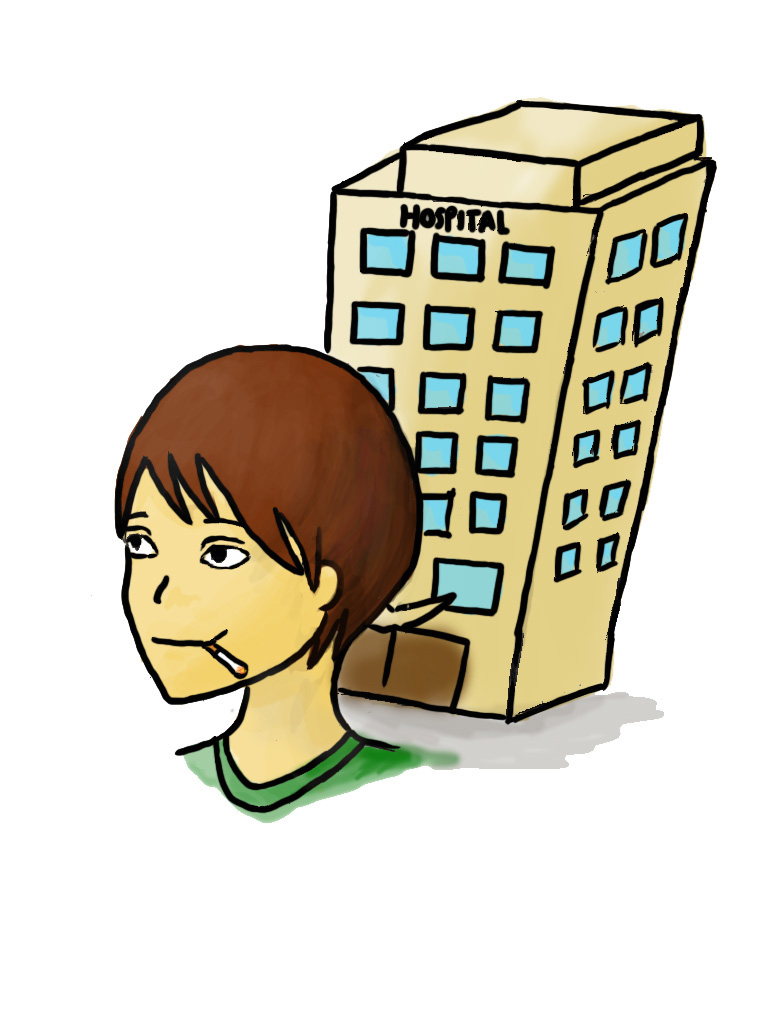Finally, the UCLA Health System has implemented a policy that should have been in place long ago; the health system’s medical area is now a completely smoke-free environment, inside and out.
The policy, dubbed the “smoking ban,” is great news for nonsmokers who work or receive treatment at the hospital. No longer will they be met with waves of secondhand smoke during their time outdoors.
But the ban is not only admirable because it gives a break to people who like clean air.
It is important for two main reasons. The ban aligns hospital policy with hospital philosophy, and it goes beyond just forbidding smoking ““ it tackles the problem of tobacco use comprehensively, offering resources for smoking cessation.
At face value, a smoking ban at a hospital makes sense. Smoking is an extremely unhealthful activity ““ there are around half a million smoking-related deaths annually in the United States. When a hospital permits smoking, it is being extremely irresponsible by not fulfilling its duties as a promoter of health and wellness. The ban places the hospital’s policy in line with its values.
But the most important aspect of the ban is that it is promoting health beyond just ridding the campus of secondhand smoke. In fact, the primary focus of the ban is to help smokers quit the habit by offering services and resources to aid in smoking cessation.
There is even a team of health professionals that formed to spearhead the smoking cessation effort called the UCLA Smoke-Free Champions.
It is important to note that the consequences of disobeying the policy are not punitive. The goal is not to issue citations but to help smokers quit smoking. When security officers or physicians observe someone failing to comply with the policy, they give the person smoking-cessation information, not a fine.
The ban, only in its first two weeks, is already being positively accepted, and by smokers. Most of the hospital employees who smoke support the ban and agree with the health-minded principles on which the ban is based. Almost all smoking patients who have been surveyed said they supported the policy, said Dr. Timothy Fong, a member of the Smoke-Free Champions.
Erik Eggins, the director of the health systems safety department, said that several patients actually thanked him for the ban as it was the impetus for getting them to quit.
But the ban is not without its opponents.
The main argument against the policy is that it infringes upon personal liberties. While this is simply not true for visitors or staff, for whom the closest smoking area is just off-campus, the issue of smoking rights is a bit trickier for patients.
Patients cannot walk outside off of the medical center’s area ““ it is considered an official discharge from the hospital ““ however, there is a protocol in place to ensure that smoking patients’ needs are met. Upon admittance, patients are informed of the ban and offered numerous resources, like Nicotine gums or patches, for dealing with withdrawal and quitting .
A Web page on the UCLA Health System website was created to share all of the resources patients need to quit smoking. The Web page has information about the policy, where to find help from physicians, treatment referrals and contact information for the Smoke-Free Champions.
The protocol and Web page were created in part to make sure that patients, when unable to smoke, would not exhibit negative changes in behavior. Fong said that typically when hospitals transition to a smoke-free environment without much preparation, they experience problems with patient behavior. But Fong said that hospitals that prepare well, like UCLA has with the protocol and resources available, do not often experience problems.
Indeed, the hospital has not encountered any increases in violence or misbehavior with patients since the ban went into effect.
The ban is part of a movement on the part of the UCLA Health System to adopt a healthier environment and culture that reflect its values as an institution that promotes health and wellness. The movement includes a ban on fried foods and an initiative that promotes exercise.
Fong said that while there are not any immediate plans to continue with similar health-minded policy changes, there are desires to enact a UCLA-wide ban on smoking.
Although I support the health system’s smoking ban, I would not like to see a blanket ban applied to UCLA’s entire campus. The hospital’s emphasis on health makes the policy necessary but is not the principal priority of the university.
Yet the best part of the hospital ban ““ the smoking cessation resources ““ should be applied to UCLA’s whole campus.
Email Guptill at cguptill@media.ucla.edu. Send general comments to opinion@media.ucla.edu.
